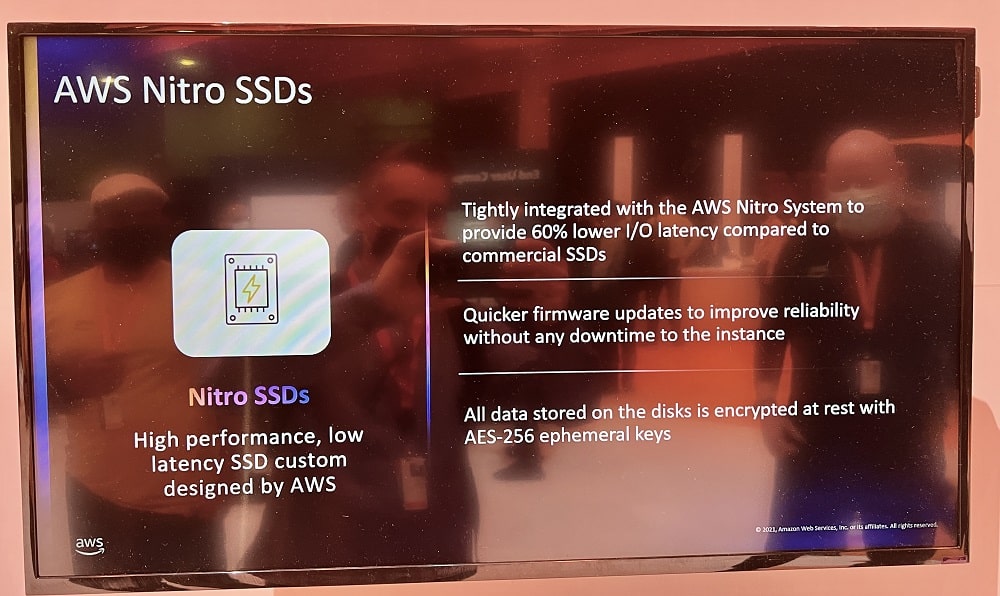AWS first announced in 2018 as a system of products, including Nitro Cards to accelerate and offload network and storage I/O, the Nitro Security Chip to monitor and protect hardware resources, and the Nitro Hypervisor to manage memory and CPU allocation with very low overhead, to deliver innovation quickly. For decades, traditional hard drives were the primary block storage devices, and while spinning disks still have their place, most high-performance storage is based on Solid State Drives (SSD).

The first generation of Nitro SSD was used to power io2 Block Express EBS volumes with lots of IOPS, plenty of throughput, and a maximum volume size of 64 TiB. The Im4gn and Is4gen instances mentioned in a previous post make use of the second generation of AWS Nitro SSDs, as will many future EC2 instances, including the I4i instances pre-announced today.
AWS Nitro SSDs are designed to be installed and operate at cloud scale. Although this sounds simple, the reality is a lot more complex and a lot more interesting. The firmware inside of each device is responsible for implementing many lower-level functions. As customers push the devices to their limits, the expectation is that AWS will diagnose and resolve any performance inconsistencies they observe. By building their own devices, AWS can design operational telemetry and diagnostics into the SSDs, along with mechanisms to enable firmware updates at cloud scale and at cloud speed. Additionally, AWS developed code to manage the instance-level storage to improve reliability, deliver consistent performance and improve diagnostics.
AWS engineered the devices to deliver maximum performance under a sustained, continuous load. Due to the characteristics of SSD technology, each cell can only be written, erased, and then rewritten a limited number of times. AWS added wear-leveling firmware to make the devices last as long as possible.
The second generation of AWS Nitro SSDs were designed to avoid latency spikes and deliver greater I/O performance on real-world workloads. AWS benchmarks reveal instances that use AWS Nitro SSDs, such as the new Im4gn and Is4gen, deliver 75% lower latency variability than I3 instances for more consistent performance.




 Amazon
Amazon